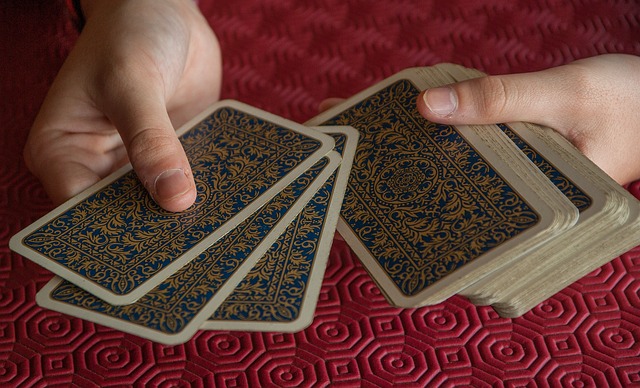I was recently playing Canasta with my wife during a trip to Stradbroke Island to attend the Stradbroke Chamber Music Festival (SCMF). It occurred to me that playing Canasta was an analogy for mindfulness – there were significant aspects of playing Canasta well that reminded me of being mindful. I don’t want to trivialise mindfulness or overextend the analogy, but there are times when the ordinary seems to assume extraordinary dimensions. Rachel Joyce captures this phenomenon in her book, The Unlikely Pilgrimage of Harold Fry – where a walking trip from the south of England to the north becomes a journey into Harold’s “inner landscape”. It seems to me that to play Canasta well you have to pay attention in the moment and, above all, “play the best game you can with the cards you’re dealt”.
Paying Attention
Paying attention on purpose is fundamental to the development of mindfulness. It builds concentration, self-awareness, awareness of the other and creative solutions to challenging problems. In Canasta, you need to pay attention to what is happening in the game, notice the micro-behaviour of the other player(s), observe the choices they make about “taking up” or “putting down”, notice what cards they ignore and what they table. You also have to be aware of what is going on in your own hand, test out your own assumptions and hypotheses about the other player’s strategy, correct any mistakes you make and “go with the flow” of the game.
Play with the cards you are dealt
According to the Mindful Awareness Research Center (MARC), acceptance is integral to mindfulness – “accepting what is”. Diana Winston, mindfulness educator with MARC, reminds us that this acceptance entails self-acceptance, breaking the complaining cycle, overcoming disappointments, being in touch with our feelings and keeping things in perspective.
In Canasta, there is no point in complaining about the cards you have been dealt or wishing that your mix of cards were better (e.g., more wild cards and jokers or multiple cards of the same number/rank). You have to play with the cards you’re dealt and develop strategies to make the most of those cards and the cards you are offered/acquire as the game progresses. You have to continue to pay attention as the game unfolds because you will begin to see opportunities that were not available or obvious at the start of the game. And so it is with mindful living.
Reflection
There are many things in life that can be enriched by being mindful – whether it is being in nature, playing tennis, driving your car, listening to music, developing inclusive leadership or just waiting for something to happen. For example, “killing time” while waiting can become an opportunity to tune your awareness, playing tennis and making mistakes can develop your self-awareness, self-regulation and resilience when played mindfully (and accepting what is!).
As we grow in mindfulness, we can enrich every aspect of our life because mindfulness is a portable state – it is not just grounded in a meditative practice or stance. It shapes who you are and how you respond to life and its many challenges. It impacts what you see and how you perceive it. It helps you to develop deep listening in relationships. Mindfulness can go with you wherever you go but it requires a concerted effort, a commitment to practice and activities that enable you to transition from meditation to living life fully and with purpose.
_________________________________________
Image by jacqueline macou from Pixabay
By Ron Passfield – Copyright (Creative Commons license, Attribution–Non Commercial–No Derivatives)
Disclosure: If you purchase a product through this site, I may earn a commission which will help to pay for the site, the associated Meetup group, and the resources to support the blog.



